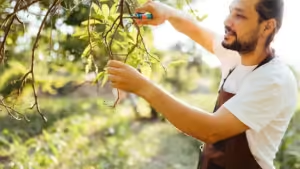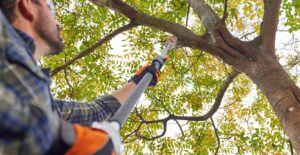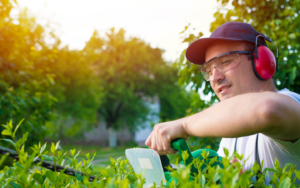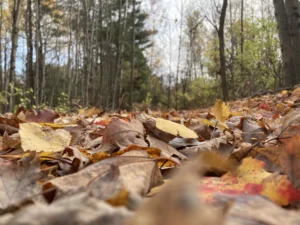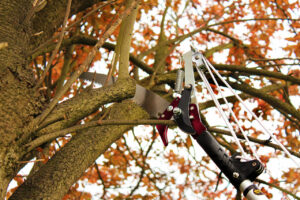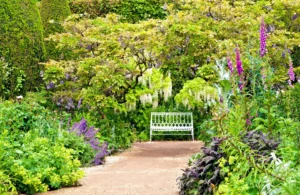1. Introduction to Tree Trimming
Trees are essential elements of a healthy landscape, offering beauty, shade, and environmental benefits. However, to ensure that trees grow properly and safely, regular maintenance through tree trimming is vital. Whether you’re a homeowner who wants to care for the trees on your property or an aspiring landscaper, this comprehensive tree trimming guide provides the foundational knowledge needed to safely and effectively trim your trees.
2. Understanding the Basics of Tree Trimming
What is Tree Trimming?
Tree trimming, also known as tree pruning, is the process of removing specific parts of a tree—such as branches, buds, or roots—to improve the tree’s health, appearance, and safety. While some trimming might be minor, like cutting off a few overgrown branches, others might involve shaping an entire tree to ensure proper growth.
Importance of Tree Trimming
Regular tree trimming provides numerous benefits, including:
- Enhancing Tree Health: Removing dead, diseased, or damaged branches promotes healthy growth.
- Improving Safety: Trimming overhanging branches reduces the risk of injury to people or property.
- Boosting Aesthetic Appeal: Well-maintained trees enhance the overall look of a landscape.
- Improving Fruit Production: For fruit-bearing trees, proper pruning can lead to a more bountiful harvest.
3. Key Tools for Tree Trimming
Essential Equipment Overview
Tree trimming requires the right tools to get the job done effectively. Here’s a table outlining the most common tools and their uses:
| Tool | Purpose | Recommended for |
|---|---|---|
| Hand Pruners | Cutting small branches up to 1 inch in diameter | Small shrubs, young trees |
| Loppers | Cutting thicker branches (1-2 inches in diameter) | Medium-sized branches |
| Pruning Saw | Removing branches larger than 2 inches | Large trees, thicker branches |
| Pole Pruner | Reaching and cutting high branches without using a ladder | Tall trees, high branches |
| Chainsaw | Heavy-duty cutting for large limbs and tree removal | Thick limbs, trunk cutting |
| Hedge Shears | Trimming hedges or shaping small trees | Decorative shaping, hedges |
| Safety Gear | Helmet, gloves, eye protection, and sturdy footwear | Personal safety during trimming |
Tool Selection Tips for Beginners
- Choose Quality Over Quantity: Invest in durable, high-quality tools to avoid frequent replacements.
- Ergonomics Matter: Select tools that are comfortable to handle, reducing strain during use.
- Understand Maintenance: Keep tools clean, sharp, and lubricated to ensure efficiency and safety.
4. When and Why to Trim Your Trees
Seasonal Guidelines
The timing of your tree trimming efforts depends largely on the type of tree and its growing cycle. Here are some general guidelines:
| Season | Best for | Tree Type |
|---|---|---|
| Late Winter | Dormant trimming for general shape and health | Most deciduous trees |
| Spring | Light pruning to remove any winter damage | Early-blooming trees |
| Summer | Pruning to control growth and enhance shape; also to remove dead branches | All-purpose trimming |
| Fall | Avoid heavy trimming as trees prepare for dormancy; light pruning to remove dead or diseased limbs | All trees |
Identifying Trimming Needs
Knowing when a tree needs trimming is crucial. Look for these signs:
- Dead or Broken Branches: These pose safety hazards and should be removed immediately.
- Crossing or Overgrown Branches: Trim to prevent damage from branches rubbing together.
- Tree Shape and Growth Direction: If the tree is growing lopsided or unevenly, trim to improve its structure.
- Diseased or Pest-Affected Branches: Remove affected parts to prevent spread.
5. Step-by-Step Guide to Tree Trimming
Planning the Trimming Process
- Assess the Tree: Before starting, inspect the tree for any dead, broken, or diseased branches.
- Determine the Trimming Goal: Whether you’re trimming for safety, health, or aesthetics, have a clear objective.
- Select the Right Tools: Choose the appropriate tool based on branch size and accessibility.
Performing the Trim Safely
- Start with Dead or Diseased Branches: These should be the first to go to prevent any spread of disease.
- Trim in Small Sections: For larger branches, cut in small sections to reduce weight and minimize damage.
- Cut at the Right Angle: Make clean cuts at a 45-degree angle, just outside the branch collar (where the branch meets the trunk).
- Balance the Tree’s Shape: Trim evenly to maintain balance and ensure proper light exposure to all parts of the tree.
Aftercare for Trimmed Trees
- Clean Up Debris: Remove all trimmings from the site to prevent disease spread.
- Water and Mulch: Provide adequate water and mulch around the base of the tree to promote recovery.
- Monitor Tree Health: Regularly check for any signs of stress, disease, or pests after trimming.
6. Tree Trimming Techniques for Different Trees
Pruning Techniques Based on Tree Type
Different trees require specific pruning methods. Here are some examples:
| Tree Type | Trimming Technique | Best Time to Trim |
|---|---|---|
| Deciduous Trees | Remove dead or weak branches, maintain shape, and thin out dense canopies | Late winter |
| Evergreen Trees | Light trimming for shaping, avoid over-pruning which can stress the tree | Early spring or late winter |
| Fruit Trees | Thin out the canopy to enhance fruit production; shape for balanced growth | Late winter or early spring |
| Flowering Trees | Trim after blooming to enhance next year’s flowers; remove damaged limbs | After flowering (depends on type) |
Common Mistakes to Avoid
- Over-Pruning: Removing too much of a tree’s canopy can stress the tree and inhibit growth.
- Improper Cutting Angles: Incorrect cuts can lead to wounds that do not heal properly, making the tree susceptible to disease.
- Topping Trees: Cutting off the top of a tree to reduce its height can harm its structure and health.
7. Safety Measures and Best Practices
Safety Gear and Precautions
Always prioritize safety when trimming trees:
- Use Personal Protective Equipment (PPE): Wear gloves, helmets, eye protection, and sturdy shoes.
- Avoid Ladder Use for High Trimming: Use a pole pruner or hire a professional for high branches.
- Check for Power Lines: Ensure branches aren’t close to any power lines before trimming.
Environmental Considerations
- Avoid Nesting Seasons: Be cautious during bird nesting seasons to avoid disturbing wildlife.
- Dispose of Debris Responsibly: Compost trimmings or use them for mulch, where possible.
- Preserve Natural Tree Shape: Trees have a natural form; trimming should enhance it rather than drastically alter it.
8. Conclusion: Trimming Tips for Success
Tree trimming is both an art and a science, requiring the right knowledge and tools to do effectively. By understanding the basics, following seasonal guidelines, and using the right techniques for each tree type, you can maintain a healthy and beautiful landscape. Regular trimming promotes tree health, safety, and beauty—ultimately contributing to a well-kept and vibrant outdoor environment. Start small, practice regularly, and don’t hesitate to seek professional help for larger or more complex trees.

